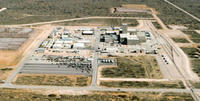-
DHS shutdown averted as House passes “clean” funding bill
The House yesterday voted to fund the Department of Homeland Security to the end of the fiscal year, without conditioning the extension on defunding the implementation of Obama’s immigration executive order. The “clean” funding bill passed on a 257-167 vote, with seventy-five Republicans joining all 182 Democrats to avert a shutdown. Speaker John Boehner (R-Ohio), in a rare move for a speaker, left his chair and went to the House floor to cast a vote in favor of the funding extension. In a speech to the Republican caucus on Tuesday, just before Israeli prime minister Binyamin Netanyahu addressed a joint session of Congress, Boehner presented members of the caucus with three options: another stopgap bill, taking up a “clean” bill which has already passed the Senate, and a Friday-into-Saturday shutdown of DHS. Boehner told fellow Republicans that he did not want to run the risk of a DHS shutdown, which, he stressed, “wasn’t an option” with the current level of threats to national security.
-
-
House votes for one-week extension of DHS funding
On Friday, just hours before the partial shut-down of DHS, the House Republican leadership, with the help of Democratic lawmakers, managed to secure a majority for a one-week extension of the funding for the department. The vote for a one-week extension passed 357 to 60 — but not before a humiliating defeat for Speaker John Boehner (R-Ohio) and members of the GOP House leadership. The leadership was convinced it had the votes for a three-week extension, but that proposal was defeated when more than fifty Republican lawmakers bolted and voted against the bill – and their leaders. Democrats lawmakers then came to the help of the speaker, voting for the one-week extension on what they regard as a tacit understanding that toward the end of this week the House will vote on a “clean” extension of the DHS budget to the end of the fiscal year.
-
-
McConnell’s DHS budget plan: “No” to 2014 exec. order, “Yes” to 2012 one
Senate Majority Leader Mitch McConnell (R-Kentucky) has put forth a plan to avoid a DHS shutdown after Senate Democrats on Monday refused to approve a Republican-backed $40 billion DHS appropriation which would defund President Barack Obama’s 2014 immigration actions in order to fund DHS. McConnell’s plan would eliminate Obama’s 2014 immigration action to extend deportation deferment to some undocumented parents of U.S. citizens and permanent residents via the Deferred Action for Parents of Americans(DAPA), but allow a similar 2012 planfor younger undocumented immigrants to continue.
-
-
DHS shutdown would have only limited immediate impact on national security: Analysts
If Congress fails to act before the 27 February funding deadline, most DHS operations would continue. During the October 2013 government shutdown, 85 percent of DHS employees remained on the job. Just a little over 30,000 of the department’s 230,000 employees, mostly in managerial and administrative positions, were furloughed.
-
-
Senate Democrats block vote on House’s DHS budget bill
In late 2014, Republicans decided to fund DHS only through the end of February 2015 in hopes of using further funding request conditioned on defunding the implementation of President Barack Obama’s executive order to halt deportations for many undocumented immigrants. Senate Democrats, on the other hand, are demanding a DHS funding bill which does not interfere with Obama’s immigration plans. On Thursday, for the fourth time, Senate Democrats blocked the Republican move to pass a bill which defunds Obama’s executive order.
-
-
Most DHS employees would go on working even if budget is not approved
The critical responsibilities of many DHS components require approximately 200,000 of the agency’s 230,000 employees to continue working even if Congress fails to fund the agency, as most DHS employees perform work considered necessary to protect human life and property. Still, withholding funding for DHS could delay the department’s employees’ paychecks until the shutdown ends.
-
-
Cybersecurity sector welcomes Obama’s $14 billion cybersecurity initiatives in 2016 budget
Massachusetts cybersecurity firms applauded President Barack Obama proposed$14 billion toward cybersecurity initiatives in his 2016 budget. If approved, the federal government would spend more money on intrusion detection and prevention capabilities, as well as cyber offensive measures. Waltham-based defense contractor Raytheon, whose government clients already use the firm for its cybersecurity capabilities and expertise, believes the cybersecurity industry is expected to grow even faster in the coming years.
-
-
Paris attacks complicate efforts to freeze DHS funding over Obama’s immigration executive orders
Last week’s terror attacks in Paris have increased concerns of DHS officials that terrorists may be looking to attack U.S. targets. For many members of Congress, the Paris events are proof that DHS operations should continue to be funded, but opponents of the president’s immigration executive order appear ready to freeze funding for DHS altogether unless such funding does not include funds for the implementation of the president’s executive orders. Senator Lindsey Graham (R-South Carolina) warned fellow Republicans to be cautious: “Defunding that part of the bill that deals with enforcing the executive order makes sense but we can’t go too far here because look what happened in Paris. The Department of Homeland Security needs to be up and running,” he said.
-
-
Not enough senators would vote to override presidential veto of DHS defunding
A late 2014 Republican strategy to fund DHS only through February in hopes of using further funding as a lever to change immigration policies once Republicans controlled both houses of Congress, may meet a dead end as Republican amendments to President Barack Obama’s DHS funding request will need sixty votes to clear the Senate. Senate Republicans will need at least six democrats or Democratic-leaning independents to vote yes to the Republican-led DHS funding bill.
-
-
Young researchers increasingly denied research grants, putting the future of U.S. science at risk
America’s youngest scientists, increasingly losing research dollars, are leaving the academic biomedical workforce, a brain drain that poses grave risks for the future of science, according to an article published this week by Johns Hopkins University president Ronald J. Daniels. For example, the number of principal investigators with a leading National Institutes of Health grant who are 36 years old or younger dropped from 18 percent in 1983 to 3 percent in 2010. Meanwhile, the average age when a scientist with a medical degree gets her first of these grants has risen from just under 38 years old in 1980 to more than 45 in 2013.
-
-
Expanding mission, budget cuts, retirements at root of current Secret Service problems
A series of recent security lapses at the White House may be attributed to an expansion of U.S. Secret Service duties ordered by Congress and the White House during the George W. Bush administration, according to a new DHS review of the agency. Officials familiar with the agency’s administrative inner-workings also note that budget cuts forced the agency to ration services while simultaneously dealing with a wave of early retirements from seasoned staff members.
-
-
California Hasidic group must refund misused DHS security grant money
The California branch of the Hasidic Jewish group Chabad-Lubavitchhas been ordered to pay $844,985 for misappropriating federal funds.In 2008, Chabad applied for a DHS grant as part of the Urban Areas Security Initiative: Nonprofit Security Grant Program, which provides funding for security upgrades to nonprofits that are at high risk of terrorist attacks.Chabad spent $272,495 of grant money on payroll, utility, and other expenses, but now has to pay penalties and damages triple the grant amount under a mandatory provision of the False Claims Act.
-
-
Funding cuts hamper health agencies’ ability to prepare for, respond to Ebola
Federal and state funds for local health agencies have been cut over the past few years, so when hospitals and municipal health agencies are asked proactively to respond to possible threats of Ebola, many question how they will fund such activities. Since 2008, at least 51,000 state and local public health jobs (roughly 20 percent) have been lost due to cuts in federal funding.
-
-
Many victims of Hurricane Sandy are still waiting for government aid

It has been two years since Hurricane Sandy destroyed thousands of homes and businesses along the Jersey Shore yet many affected homeowners are still waiting for federal and state aid to rebuild. Of the $3.26 billion the U.S. Department of Housing and Urban Development (HUD) has provided to New Jersey, only $802 million has been paid out as of 30 September. The federal government’s first allocation of Sandy funds to New Jersey came seven months after the storm. The state has yet to issue any of the $1.46 billion approved by HUD in May, and New Jersey officials expect a final round of $880 million next spring.
-
-
U.S. planning expansion of nuclear production in the face of safety concerns

Despite the release of a damning report regarding the 14 February nuclear waste accident at the Waste Isolation Pilot Plant (WIPP) near Carlsbad, New Mexico by the U.S. Department of Energy (DOE), the government is planning ramped-up production of nuclear weapons cores, a move which is raising red flags for those calling for reform of nuclear production and storage procedures.
-
More headlines
The long view
Foundation for U.S. Breakthroughs Feels Shakier to Researchers
With each dollar of its grants, the National Institutes of Health —the world’s largest funder of biomedical research —generates, on average, $2.56 worth of economic activity across all 50 states. NIH grants also support more than 400,000 U.S. jobs, and have been a central force in establishing the country’s dominance in medical research. Waves of funding cuts and grant terminations under the second Trump administration are a threat to the U.S. status as driver of scientific progress, and to the nation’s economy.
The True Cost of Abandoning Science
“We now face a choice: to remain at the vanguard of scientific inquiry through sound investment, or to cede our leadership and watch others answer the big questions that have confounded humanity for millennia —and reap the rewards.”
